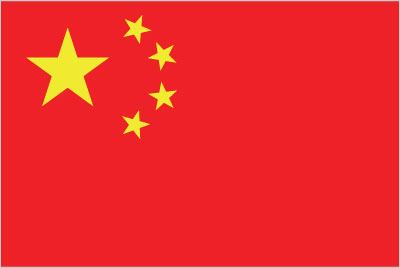No longer can it be assumed that all products made in China are “cheap”. Although this is a relative term, as the quality of medical devices manufactured in China gets better, the country will be looking less to importers, turning Western companies away and instead looking to its domestic manufacturers.
“Chinese companies are interested in entering any highly profitable medtech space,” says Ames Gross, president and founder of Pacific Bridge Medical. “If a specific medical area is profitable, they are either already manufacturing products in that area or will be soon—and they do not want to import medtech products that they can make on their own.”
In a Q&A with MedTech Intelligence, Gross explains the challenges that companies outside of China face in getting into this market, along with the opportunities for Western companies.
MedTech Intelligence: What is the most difficult medtech sector/niche to penetrate in China?

Ames Gross: The most difficult sectors for global medtech manufacturers to penetrate in China today are sectors where Chinese competitors have the ability to make similar products with the same quality or 80% of the quality of Western products at only two-thirds of the price. This includes orthopedic implants, drug-eluting stents, respiratory products, and all kinds of low-cost consumables, much of which they currently export to the West. The quality of domestic Chinese products is improving quickly, and Chinese manufacturers will be able to make sophisticated Class III medical device products that are 90% to 100% as good as Western products in five years. Some of their products are already just as good right now.
MTI: What are the most promising areas for medtech development in China?
Gross: Medtech products that are tailored for the Chinese market, such as products that take into consideration the different body types and genetic makeup of Chinese customers or products that focus on prevalent diseases in the region, will do well. For example, nasopharyngeal cancer is widespread in China but much less common in Western countries, due to environmental, dietary and hereditary factors. Medical devices and treatments that can help with this type of cancer are good ones to develop in China. Tailoring medtech products to Chinese customers, as opposed to just shipping in Western products for Western diseases, will be very important going forward.
China, with its huge factories and ability to make large volumes of quality products, is still the best place to go for mass-producing disposable and low-tech medical devices such as syringes and drainage bags. Right now, there are not enough producers of these products globally. Last year, my company was helping a large hospital chain source surgical gowns. Our client thought the prices of surgical gowns manufactured in China were too high, so we looked to the option of sourcing from India and Vietnam. However, we found that the volumes the Indian and Vietnamese factories could produce were only a fraction of the needed supply or the quantities that could be made in China.
What about the market in Japan? Read our Q&A with Ames GrossMTI: How will the “Made in China 2025” plan impact the medtech industry?
Gross: China would love to take over the dominance of Western companies in the medtech space. The country aims to make all the medtech products they need domestically and not import from the West, while also exporting their products all around the world. Currently, China is already exporting many medical device products overseas and hopes to expand these efforts in the future.
It will take a long time for China to match the Western countries in developing new, highly innovative medtech products and reach the point where they can avoid importing these products from the West. However, the Chinese government and Chinese investors are spending more and more money on research and development to come up with innovative medical devices, as they hope to catch up as soon as possible. For this reason, Chinese medtech companies and investors have been making vast investments into Western medical device companies over the last few years. They want to obtain the new technologies quickly and use them in China. There have been so many Chinese investments in American and European companies over the last five years, including in companies like Wright Medical (Memphis) and Mevion (Boston). Although less money is coming out of China today due to new regulations enacted by the Chinese government, the trend of Chinese investment in Western medtech companies will continue in the long term.
It is important to note that there could be an ultimate “price” to medtech companies that accept Chinese investment money. Typical Chinese investment deals include the Chinese company purchasing stocks in the Western medtech company. In addition, however, most Chinese investors also want exclusive manufacturing and selling rights in China. This may be acceptable, but a common problem that arises in China is that another Chinese entity (oftentimes, a family member or friend of your Chinese partner) will obtain access to confidential information about your product and start manufacturing copycat products in another province in China. Even if you have patents in place in the United States and Europe, copycat products sold at 60% of the original cost can provide harmful competition for your product in other markets like Brazil and South Africa. While more and more local Chinese manufacturers are applying for their own patents nowadays and hence want such patents to be defensible, intellectual property protection is still a huge problem in China. Going to court in China over intellectual property violations can be a very expensive and time-consuming process—and in most cases, foreign medtech companies do not win their case.
If the potential opportunity for a certain medical device product in the Chinese market is judged to be very large, other strategies such as acquisitions or joint ventures can be pursued. But with so much Chinese investment money available today, acquiring a Chinese company will be very expensive for foreign medtech companies. And while setting up joint ventures with Chinese partners used to be common 10 to 25 years ago, nowadays more companies contact my company about joint venture divorce than about setting up new joint ventures. Greenfield strategies can work for certain products, but it must be kept in mind that as China has become more regulated, the time to get a new medical device operation off the ground can easily be more than two to three years. For new manufacturing operations in China, the regulatory requirements include a Chinese business license, a medical device manufacturing license, a good manufacturing practice (GMP) inspection, and product registration before your new China business can open. Furthermore, the applications for the aforementioned licenses must be submitted sequentially, not at the same time, which lengthens the timeline.
MTI: Any additional comments on challenges in doing business in China?
Gross: Regulatory and product registration issues are still a major challenge in China, and clinical trials there are quite costly. Supposedly, with the recent new regulations, more foreign clinical data will be accepted for registration of Class II and III devices in China, which should reduce the need to conduct local clinical trials. However, most Western medical device companies with Class II products never needed to conduct clinical trials in the United States or Europe for product registration approval, and therefore do not have clinical data available to submit. For Class III innovative devices, we have only seen a few instances where foreign clinical data was accepted to date. It seems that foreign clinical data has only been accepted from the world’s largest medical device companies. In my experience, small- to mid-sized medical device companies that manufacture innovative Class III products have not succeeded with obtaining product registration approval in China without conducting local clinical studies there.
To complicate matters further, there is no established process for the approval of local medical device clinical trials in China. Unlike for pharmaceutical clinical trials, where you can have preliminary discussions with the China Food and Drug Administration (CFDA) officials to obtain approval of the trial protocol and other details before you begin, sometimes the CFDA will say after the fact that your local medical device clinical trial is not acceptable and require the applicant to do it again.







